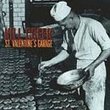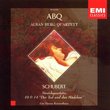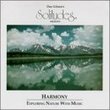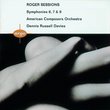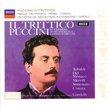| All Artists: Various Artists Title: Dr Who at the Radiophonic Workshop 2 Members Wishing: 4 Total Copies: 0 Label: EMI Import Release Date: 5/30/2005 Album Type: Import Genres: Dance & Electronic, Pop, Soundtracks Style: Dance Pop Number of Discs: 1 SwapaCD Credits: 1 Other Editions: Doctor Who: At the BBC Radiophonic Workshop 2 UPC: 766481195078 |
Search - Various Artists :: Dr Who at the Radiophonic Workshop 2
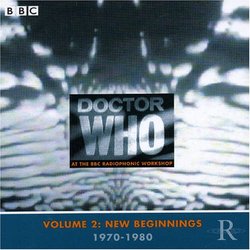 | Various Artists Dr Who at the Radiophonic Workshop 2 Genres: Dance & Electronic, Pop, Soundtracks
Volume 2 of the music, effects and atmospherics from the heyday of the cult TV series from 1970-80. An insight into the BBC recordings workshop pioneering techniques that influenced electronic music. Mute. 2005. |
Larger Image |
CD DetailsSynopsis
Album Description Volume 2 of the music, effects and atmospherics from the heyday of the cult TV series from 1970-80. An insight into the BBC recordings workshop pioneering techniques that influenced electronic music. Mute. 2005. Similar CDs
|
CD ReviewsGroundbreaking music that made Dr. Who the show it was Daniel J. Hamlow | Narita, Japan | 04/08/2004 (5 out of 5 stars) ""Music, effects, atmospheres and ambiences from the BBC Radiophonic Workshop," to quote material from the verso. Electronic music became a part of the BBCRW, which from the 1960's, broke ground in creative use of sound in TV programmes, and Dr. Who was one area that saw the fruit of its labours realised. The 1970's was a peak period for such, as eerie space age music and special sounds found themselves on during the Jon Pertwee years (1970-1974) and Tom Baker years (1974-1981). They sure give a more space-age atmosphere compared to the conventional orchestral arrangements of Star Trek and Star Wars.This is demonstrated in the evolution of the Dr. Who theme music, which had a new edit from Ron Grainer's original theme from 1963, introducing a stuttering motif in the opening title music. The stereo version deleted the stuttering, and served until 1980, where the keyboards were more hard-edged, reflecting the synth-rock of Jean-Michel Jarre. A short-lived variation, the Delaware version by Paddy Kingsland, featuring a twangier, uptempo, higher pitched organ crossed with a kazoo arrangement, with bleeping computerized sounds interspersed, was only used on two stories before being dropped.The highlight of this technological evolution comes from the EMS Synthi 100 synthesizer, named the Delaware. A modular analogue synthesizer with dials that took up a whole room It's weirdness is demonstrated in Malcolm Clarke's score of the 1973 story The Sea Devils, consisting of short selections that make up tracks 13 through 37 of the CD. This is the most avant, cutting edge sound I've heard on Dr. Who. As said in the inner sleeve, Clarke's sound "eschews conventional tonality and replaces even remotely-recognisable timbre with a palette of weird pulsings and semi-random noise." Call him the Ornette Coleman of synth music. This will either give one a headache or if one imbibes certain psychedelic substances or liquids, quite a trip. Some of Add N To X's music sounded like this.However, Delia Darbyshire's contributions to Inferno, my second favourite Who story, are my faves because of the quiet, unearthly, eerie, and haunting sounds, mostly from "Blue Veils and Golden Sands" which makes one feel as if they're on some weird and strange alien world. Ditto for the airy and hypnotic "The Delian Mode," which utilized her emphasis on basic oscillators and tape cutting techniqures.The ominous theme for The Keller Machine, the evil mind parasite that kills people by their deepest fears, matches the threat posed by the alien, a pulsing and fuzzy, mixed with a high-pitched organ, a variation on the theme of the Doctor's archenemy the Master.Among the sound effects include the wheezing and groaning sound of the TARDIS landing, the ghostly wind effects and clinking chimes from The Monster Of Peladon and the keening and whistling, haunted house atmosphere from Planet Of The Spiders (the scene where the Doctor is in the cave).Count the BBC Radiophonic Workshop and people like Delia Darbyshire and Malcolm Clarke in the ranks of Wendy Carlos, Goblin, Can, and Kraftwerk in the evolution of synthesizer music." The musical oddity continues grrreg | 12/03/2000 (4 out of 5 stars) "Following on from the first in the series, this CD has the advantage that it contains longer pieces than the first (49 rather than 75 tracks).It's a mixed bag. The music from 'Inferno' is great, while that from 'The Sea Devils' is extremely impenetrable and potentially painful for some listeners (possibly to be put on at the end of a very long party for those guests who just won't leave).There are also several versions of the Doctor Who opening and closing music, including the wisely unused Delaware version (so-called because of the synthesier it was performed on), which has emerged on the video for 'Carnival of Monsters'." Superb Music from the 1970's! Gian-luca Di Rocco | Markham, Ontario Canada | 10/02/2000 (5 out of 5 stars) "This CD features music, effects and atmospheres from Doctor Who episodes first broadcast in the 1970's. The majoriy of the music from the album is the 43 minute soundtrack to The Sea Devils, composed and realised by Malcolm Clarke. This music is some of the most original, innovative and evocative music the TV series had to offer. Fans of progressive rock music in particular ought to enjoy this section of the CD. However, the CD is over 79 minutes long, and features tracks from a lot of other stories, including almost 10 minutes of atmospheric music from Inferno composes by Delia Derbyshire herself. And as a special bonus there is some previously un-released music by Peter Howell used as demo's for the Horns of Nimon, but not used in the tv series. The demo's presage how the music would sound in the 1980's, and is very enjoyable. Here's hoping a 1980's volume will be coming out soon."
|

 Track Listings (49) - Disc #1
Track Listings (49) - Disc #1